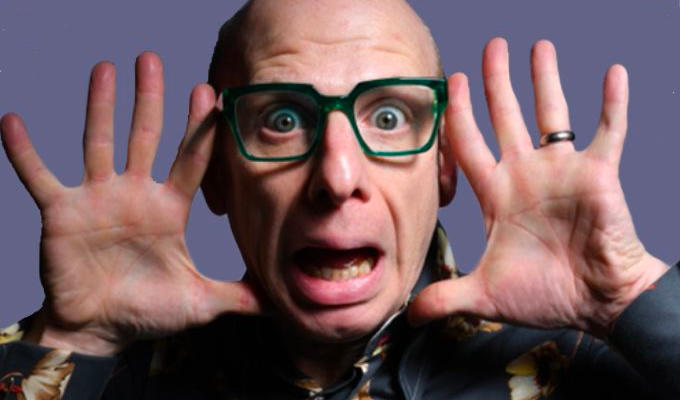Save for his current monthly residency at London’s swanky Pigalle Club, this was the first solo show from
Steve Furst’s high-kicking, cravat-wearing lounge crooner Lenny Beige in nine years. But it too often felt less like a triumphant return of a rejuvenated favourite, and more like a tired run-through of an exhausted character.
Success with a creation such as this depends entirely on the performer’s conviction, but Furst couldn’t bring much pizzazz to the occasion. Try as he might, he couldn’t convert an airy, half-empty Brighton marquee into the ritz of Caesar’s Palace at the height of its Rat Pack glamour.
He seemed to enjoy belting out such old standards as Goldfinger, Spinning Wheel, and a funkily syncopated version of Pop Goes The Weasel, but there wasn’t enough passion to be infectious. Furst seems to hold in genuine awe the classy entertainers of old – especially Anthony Newley, it transpires – but his fandom is tempered by an compulsion to wrap his performance in irony. The result is that the musical element falls between too stools: too tongue-in-cheek to be a barnstorming romp through the old toe-tappers, yet too respectful to be a no-holds-barred piss-take.
Only once did the combination really work – with a jazzy rendition of the Oompa Loompa song from Willy Wonka And The Chocolate Factory written, of course, by Newley. The juxtaposition of serious musicianship and ridiculous lyrics worked excellently.
Between songs, the banter was largely rudderless, and seemed to involve a lot of in-jokes that the boys in the band enjoyed more than the audience. Furst assumes a lot of familiarity with the character that many people simply don’t have – as evidenced by the ill-judged Q&A session at the end, when one punter asked why Beige wasn’t blond. He’s never been blond… maybe he was being confused with Bob Downe, another cheesy comedy chanteur of the Nineties.
That said, there was a smattering of funny lines buried in the blether, mostly self-referential jibes about his luxuriant wig or place in the Parthenon of great Jewish entertainers – but just not enough to keep the laughs coming consistently.
The comedy seemed unfocussed; a sleepwalk through some half-finished ideas that occasionally bore fruit. Combined with the identity crisis blighting the musical numbers, it made for a frustratingly unsatisfying experience.
Reviewed by: Steve Bennett
Brighton, May 2008

